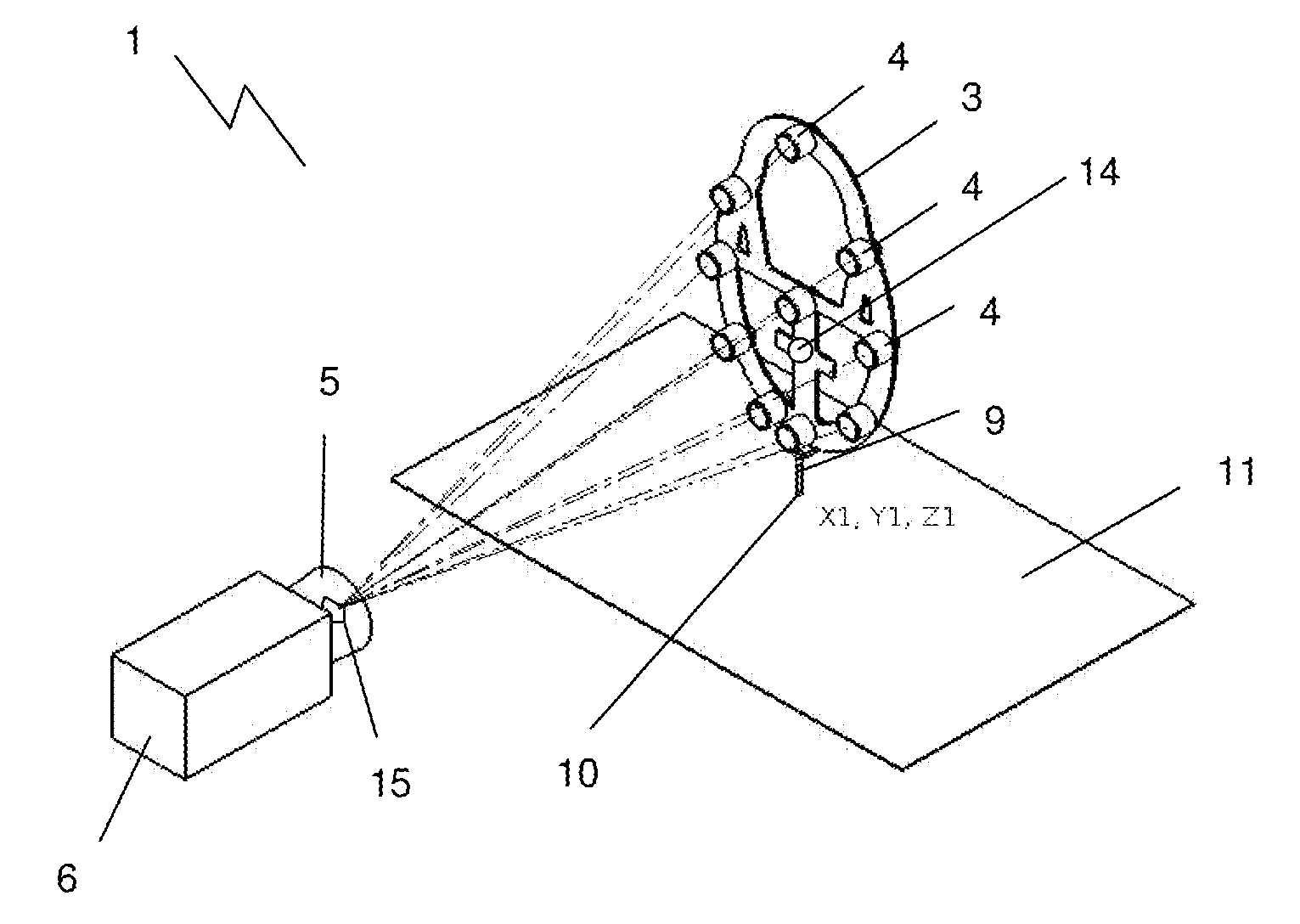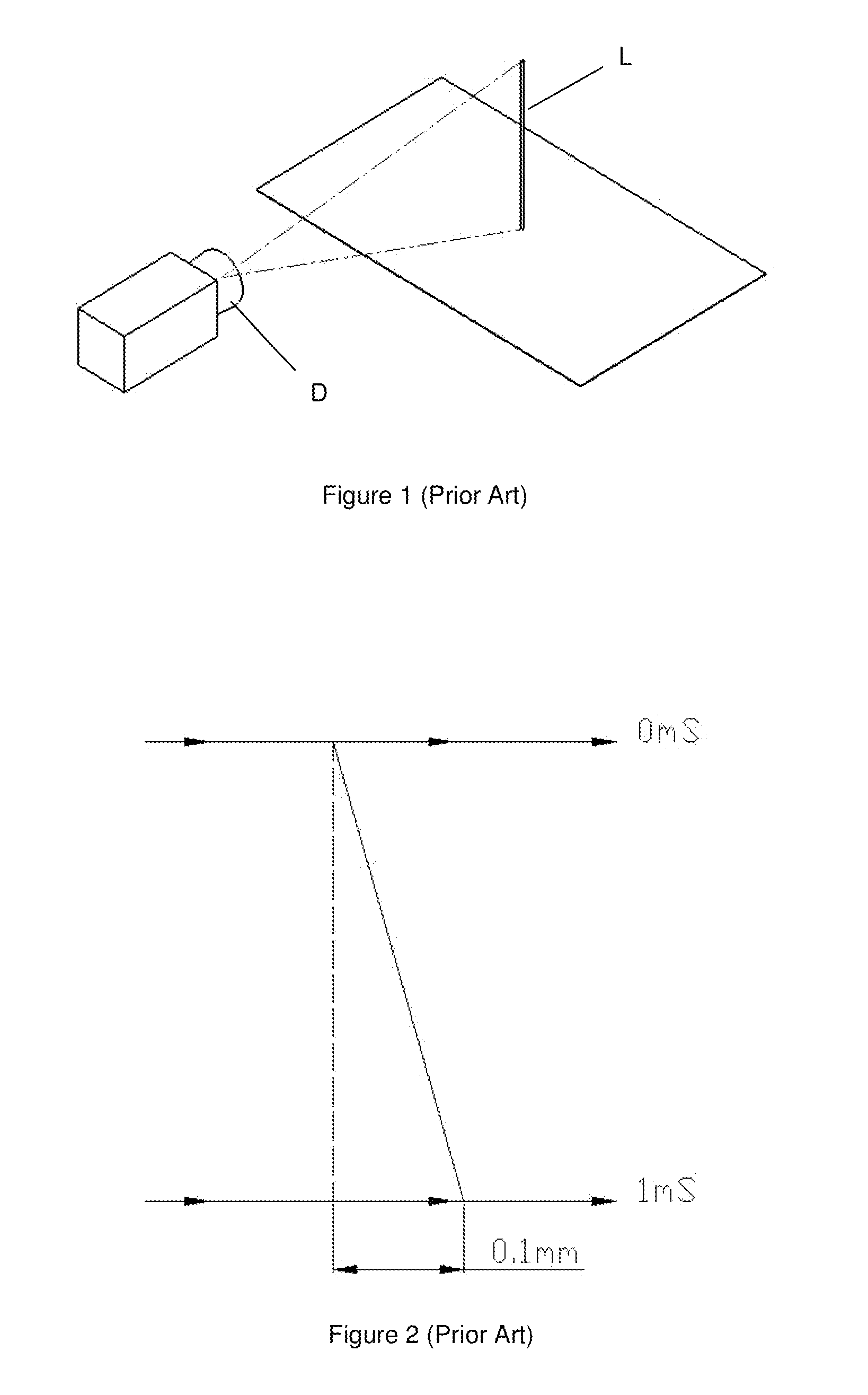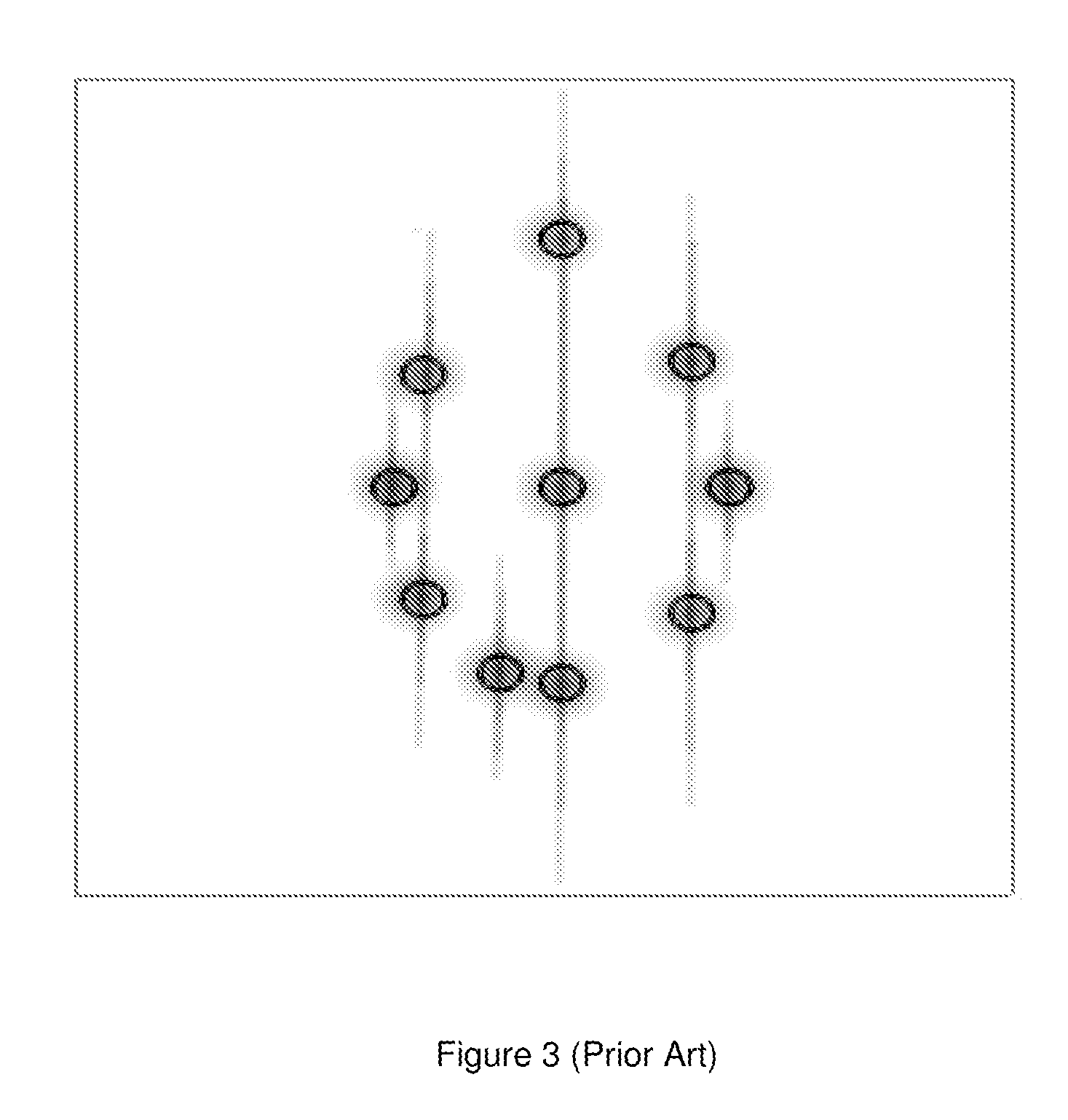Optical probe
a technology of optical probes and probes, applied in the field of optical probes, can solve the problems of poor tracking resolution, poor accuracy, and inability to wear, brake or calibrate the optical probes, and achieve the effects of reducing processing power, low resolution, and low tracking resolution
- Summary
- Abstract
- Description
- Claims
- Application Information
AI Technical Summary
Benefits of technology
Problems solved by technology
Method used
Image
Examples
Embodiment Construction
[0082]Referring initially to the prior art system shown in FIG. 1, where a high frequency digital image acquisition technique often referred to as an electronic shutter is used, a CMOS imaging chip is used in the digital camera D. As an optical probe is usually a hand held device, it cannot be considered a static device. If the optical probe moves at a speed of 100 mm / s, then it will move 0.1 mm in 1 millisecond, as illustrated in the digital image of FIG. 2 where the lamppost L of FIG. 1 appears diagonally because of the movement, and in the case of a CMOS sensor, this is known as tearing of the image. The accuracy of a typical CMM arm is less than 0.1 mm; therefore it is essential that the optical probe is imaged in as short a time as possible. In order to achieve this, prior art optical probes electronically read the digital camera sensor at a very high frequency. In the case of CCD sensors, this digital process is prone to blooming, smearing or overexposure during the imaging pr...
PUM
 Login to View More
Login to View More Abstract
Description
Claims
Application Information
 Login to View More
Login to View More - R&D
- Intellectual Property
- Life Sciences
- Materials
- Tech Scout
- Unparalleled Data Quality
- Higher Quality Content
- 60% Fewer Hallucinations
Browse by: Latest US Patents, China's latest patents, Technical Efficacy Thesaurus, Application Domain, Technology Topic, Popular Technical Reports.
© 2025 PatSnap. All rights reserved.Legal|Privacy policy|Modern Slavery Act Transparency Statement|Sitemap|About US| Contact US: help@patsnap.com



